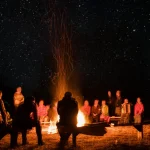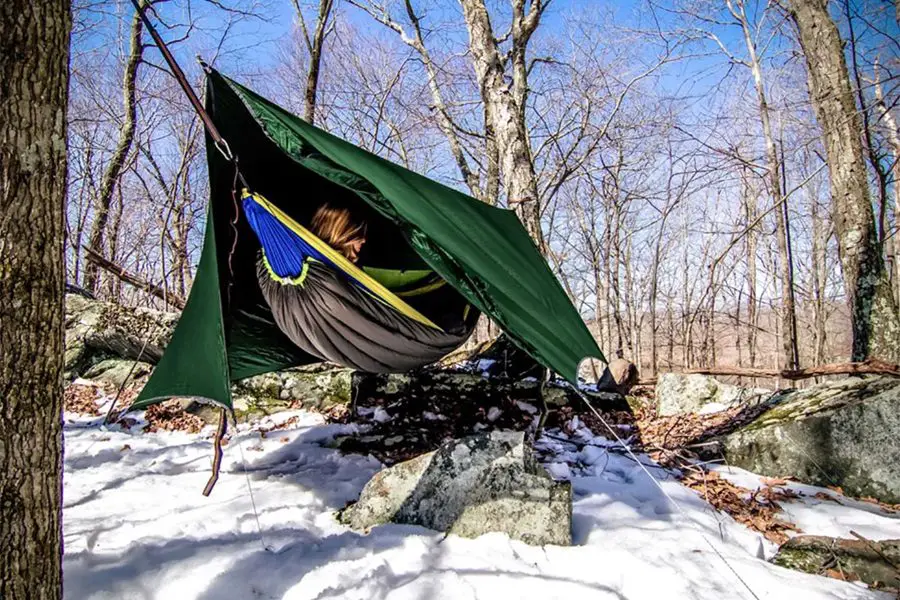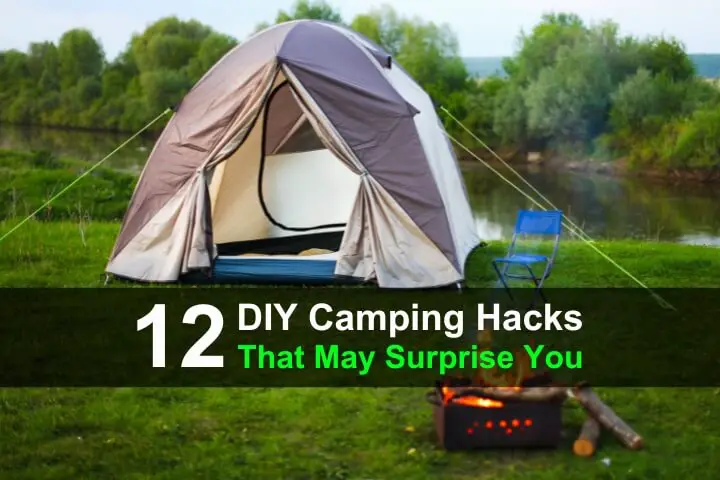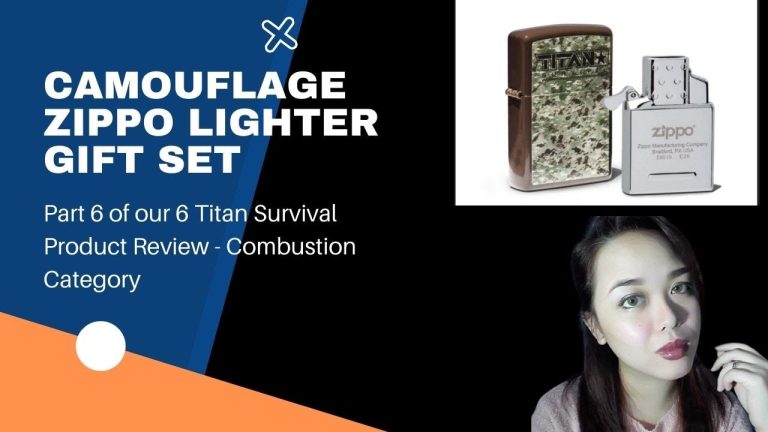SHTFPreparedness may collect a share of sales or other compensation from the links on this page.
There are plenty of brave campers who love to venture out into the woods with their hammocks.
Whether the temperature outside is 30 F (0 C) or -40 F (-40 C), you’ll find experienced hammock campers hanging around and having a wonderful time.
Should you camp in a hammock during the winter? The answer depends on your hammocking experience level and the climate in the area where you plan to camp.
Winter Hammock Camping Tips

1. Do the Proper Preparation
Preparing ahead of time is the most important step for hammock camping in the winter.
Without the right preparation, you could potentially end up with a disaster on your hands. A chilly back would be the least of your problems!
So, how should one prepare for hammock camping in the winter? The first step is getting the right gear, followed by a practice run or two in your backyard.
2. Choosing the Right Location
Avoiding flash flood zones, large open areas exposed to wind, and clearly dangerous terrain are just a few obvious location considerations. Avoid basins in the landscape. Basins are a trap for freezing in the middle of the night.
Since basins are lower in altitude than surrounding terrain, they tend to collect colder air as it sinks. This leads to a collection of freezing air that can drop several degrees below the surrounding area. If you’re not prepared for extreme temperatures, you can quickly end up in trouble during the night.
Avoid cliff faces and cliff sides. Cliff faces and cliff sides are both wind traps. Wind rushes over cliff faces and can chill you to the bone, even if you have excellent wind protection.
The same goes for cliff sides facing the wind. Air can rapidly move toward the cliff face and get you doubled when it creates a mini-current of circulating cold air. Essentially, the cliffside transforms into a refrigerator, with you suspended in its center.
3. Wear Warm Winter Clothes
To stay warm when winter hammock camping, the first step is to wear warm winter clothes. Warm sleeping gear can make a world of difference in keeping the winter chill away.
A comfortable wool cap will keep your nose warm, while a pair of thick wool socks will keep your toes and feet toasty. For additional warmth, you can also wear a pair of long johns and a thick henley.
Now that we’ve covered all the gear you might want for staying warm while hammocking in the winter, let’s move on to the situational aspects of winter hammock camping.
4. Get a Good Insulating Sleeping Pad
Sleeping pads need to do more than keep you comfortable when you’re in a hammock. Your sleeping pad is one of the most important pieces of insulation when hammock camping during the winter.
Sleeping pads work exceptionally well for insulating you from the cold. Air-filled sleeping pads are ideal for this because they will insulate you from the wind-chilled exterior of your hammock.
Air is a poor conductor, meaning it works effectively as an insulator for your whole body. For those who regularly hammock camp, you should already have a sturdy, air-filled sleeping pad you trust to keep you insulated.
5. Underquilts Are a Necessity
Just as important as a hammock and sleeping pad, underquilts are one of the first lines of defense against the cold. Underquilts sit beneath the hammock, protecting you from the cold wind and weather.
They’re like sleeping bags for the underside of your hammock. These are critical because they prevent wind from blowing through your hammock’s nylon, saving you from freezing wind chill.
Underquilts are relatively universal, with the only real difference in sizes being single or double-sized. Make sure your underquilt has the same or more surface area as your hammock.
6. Get a Top Quilt Too
If you’ve never camped in cold weather before, you might miss this crucial piece of hammock gear. Similar to an underquilt, a top quilt serves as a sleeping bag for the top of your hammock.
This keeps wind off the top of your body while you’re lying in the hammock, in addition to providing more warmth and insulation.
Like underquilts, you don’t need to buy a top quilt that is the same brand as your hammock. Instead, look for winter-rated top quilts that will fit over your sleeping bag.
7. Protect Yourself With a Rain Fly
When it’s especially cold outside, precipitation adds another factor to hammock camping’s deadliness.
Instead of protecting yourself from rain, you suddenly need to protect yourself from freezing rain, snow, and blizzard conditions. While you might be able to avoid the rain fly on individual outings if you are familiar with the weather, it’s always advisable to be cautious.
Plus, you should already have a rain fly if you’re an experienced hammock camper. Whatever rain fly you normally hammock with should be sufficient for winter hammock camping.
8. Sleeping Bags Make the Nights Warmer
Another crucial piece of gear you’ll want is a sleeping bag. Depending on how low the temperatures get, you can maybe get away with not bringing a sleeping bag above 30F (-1 C).
Sometimes a sleeping pad, underquilt, overquilt, and blankets are enough to stay cozy if there isn’t much wind. But for most trips, you’ll want a good “mummy-style” sleeping bag you can sleep in. It adds another layer of insulation that transforms your sleep from survivable to comfortable.
Similar to sleeping in a tent with a sleeping bag, the sleeping pad, underquilt, overquilt, and rain fly provide extra insulation and rain protection. The sleeping bag adds an extra layer of comfort and enjoyment to the experience.
9. Extra Insulation
You don’t want to go too crazy here, as your sleeping bag should handle most of the chill you experience inside the hammock.
For extra warmth, use a sleeping bag with plenty of insulation on the outside and inside the hammock.
But sometimes you just need a little more insulation to keep the chill out of your bones and stay extra cozy. In these cases, you have two choices for extra insulation. For these purposes, use a fleece bag liner and a wool blanket.
10. Check the Weather
In normal winter climate conditions, you shouldn’t have to worry too much about the weather, given that you’ve prepared well ahead of time by choosing the right gear.
But you’ll want to watch out for pitfalls that can turn a normal winter camping trip into a potential survival scenario.
Avoid Blizzards and Avalanches
Icy winds, rain, and thick snowfall can wreak havoc on a body hanging in a hammock. Avoiding blizzards altogether is the most effective strategy.
We urge you to closely monitor the weather and pay attention to any weather alerts issued about the days you plan to hammock camp. If there is a chance of a blizzard, I’d personally call the trip off to be safe.
Avalanches are another weather-related scenario you want to be aware of. If you’re hanging in a hammock and an avalanche occurs, you are in a very dangerous situation.
For avoiding avalanches, our best advice would be to avoid camping on mountainsides where several inches of fresh powder have occurred.
Check with local rangers and outdoors enthusiasts to ensure the location you plan to camp in is safe.
11. Tell Others of Your Plans
Whenever you are preparing to go on a camping trip, you should let others know of your plans ahead of time.
Regardless of whether you’re camping alone or hammock camping with another person, leaving a trip itinerary with a loved one will aid rescue teams in case they need to find you.
Write out a detailed explanation of where you’re going, how long you’re staying, and when you’ll be back. In case anything goes wrong, rescue teams will have a significantly higher chance of finding you.
You should never skip this step, especially for winter hammock camping trips, which are especially hazardous.
Final Thoughts
If you lack experience in hammock camping in the winter and the weather looks rough, it’s better to postpone your trip until a later date.
It’s not worth risking life and limb for one camping trip! If you’re dead set on camping in tough conditions, consider taking a tent instead.
A camping tent in combination with a comfortable mattress is a fantastic reserve solution for winter camping. Hammocks can work in the cold, but tents are more reliable in cold winter weather.
Don’t let your ego get in the way of your safety and enjoyment of the outdoors. Hammocking is just one way to go camping. It’s more important that you get the opportunity to enjoy the outdoors!

















